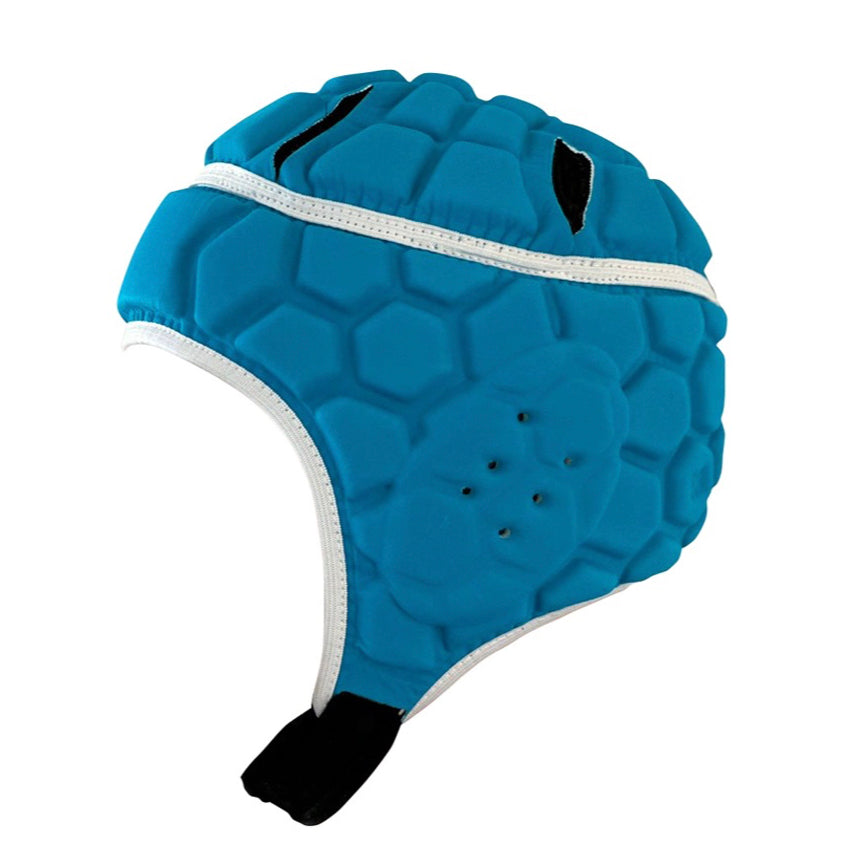
Collide Sport Scrum Caps: Protecting the Game, Protecting the Players
Share

In the fast-paced world of sports, safety has always been a top priority. Whether you're a professional athlete or a weekend warrior, protecting yourself from potential injuries is crucial. In contact sports like rugby, one piece of protective gear has become synonymous with player safety – the scrum cap. In this blog, we'll delve into the world of scrum caps, exploring their purpose, design, and their role in safeguarding athletes.

The Purpose of Scrum Caps
Scrum caps, also known as headgear or rugby helmets, are a type of protective headgear worn by athletes, particularly in contact sports like rugby, American football, and sometimes soccer. These caps serve several important purposes:
- Head Injury Prevention: The primary function of a scrum cap is to reduce the risk of head injuries, such as cuts, abrasions, and concussions, by providing a cushioning layer that absorbs impact forces.
- Ear Protection: Scrum caps often feature padded flaps that cover the ears, protecting them from injury, especially in sports where scrums or tackles involve close contact.
Sun and Weather Protection: Some scrum caps are designed to provide protection from the sun, rain, and cold weather, making them versatile for different playing conditions . 
Design and Construction
Scrum caps are typically made from a combination of materials that prioritize both comfort and safety. Common design features include:
- Padding: The most crucial component of a scrum cap is its padding, which is usually made from high-density foam or gel. This padding absorbs and disperses the force of impacts, reducing the risk of head injuries.
- Lightweight Material: To ensure that the cap doesn't become a hindrance, it is typically made from lightweight and breathable materials that provide comfort and ventilation during gameplay.
- Adjustable Straps: Most scrum caps have adjustable straps or a chin strap to ensure a secure and comfortable fit on the player's head.
- Ear Protection: Many scrum caps come with ear guards or flaps to protect the ears from impacts and abrasions. These flaps are usually padded for added protection.
- Customization: Players often have the option to customize their scrum caps with team colors, logos, or personal designs, making them not only functional but also a part of the player's identity.
- While scrum caps are widely accepted as a protective measure, there has been some controversy regarding their effectiveness in preventing concussions. Research on this topic is ongoing, and some studies suggest that while scrum caps can reduce the severity of head injuries, they may not entirely eliminate the risk of concussions.
- It's important to note that scrum caps should be seen as a complementary safety measure alongside proper tackling techniques and adherence to game rules. The key to player safety lies in a combination of protective gear, training, and a focus on fair play.
Conclusion
Scrum caps play a crucial role in safeguarding athletes in contact sports. They are designed to reduce the risk of head injuries and provide added protection to players during intense gameplay. While their effectiveness in preventing concussions remains a subject of debate, they are undeniably a valuable tool in enhancing player safety. As the world of sports continues to evolve, so too will the technology and design of scrum caps, ensuring that athletes can focus on their performance while knowing they have an extra layer of protection on their side.
